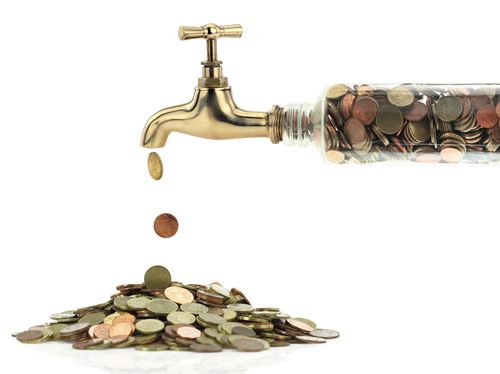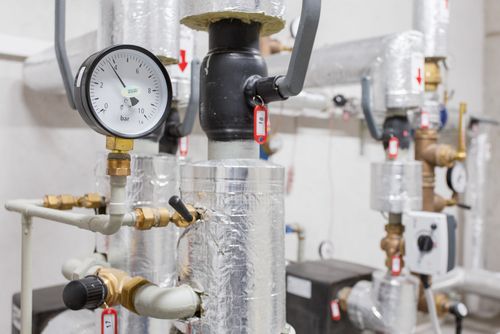Why Trenchless Pipe Lining is a Better Option
One of the biggest property-owning headaches settles in when aging water pipes start causing problems. They can develop gradually as pinpoint leaks expand into larger problems, or can dramatically burst, flooding your property.
San Diego, in particular, has an issue with outdated and degraded water pipes. Older neighborhoods may have miles of pipes composed of iron or clay that could date back a century or more. Other properties may use PVC pipe that also breaks down over time. Tree root growth, ground shifts, and normal wear and tear can create serious problems in pipes.
Property owners should check over the pipes for which they have the responsibility to make sure that they still can perform their task.
Even small leaks should get repaired quickly because they can add up to major costs over weeks or months. Some may find that the water lost in a year would have more than paid for repairs.
More importantly, in a state that often strains to provide safe drinking water during occasional droughts, leaky water pipes lose significant amounts of this most precious resource.
If a checkup discovers leaks or other problems, the property owner has an important decision to make. How should he or she choose to get the job done?
A property owner has two choices when it comes to pipe repair and replacement. Either go with the traditional method of excavating and replacing the pipe or use the latest and least invasive technology that could save residential and business owners like hundreds, or perhaps even thousands of dollars.

The Old-Fashioned Way
Laying water pipes in trenches serves as the traditional way to install or repair a water pipe system.
How traditional? Underground water delivery systems date back at least to the time of the Roman Republic, possibly as early as 200 BC. Just because a method is millennia old, however, does not mean that it serves as the best method in the 21st century.
In this method, the contractor must dig deep into the ground along the entire length of the affected pipe. This procedure will involve the use of expensive heavy equipment and the moving of tons of dirt.
Finding the pipe, digging to reach it, and then repair or replacement consume a lot of resources, making this a complex way to restore optimal water service.
Problems With Trench Dug Pipe Laying
The traditional method of repairing or replacing pipes involves transforming part or all of a property into a major construction project. Large areas of the yard will require digging up, regardless of any landscaping or hard surfaces encountered.
Even outside of the area that requires digging, heavy machinery tracks can grind into grass or other property features. Backhoes, trucks, and other specialized equipment may be necessary to complete the job. Each has the potential to tear into lawns, gardens, and other features on your landscape.
Once the contractors perform their work and fill in the holes, they have no obligation to restore the property. Unless otherwise specified, the responsibility of returning the property to its original look lies with the owner.
Imagine your well-tended grass, flowers, walkways, and other landscaping features demolished and replaced by large barren spots, unusable sidewalks and driveways, or a destroyed garden. Depending on where the pipe runs, you could be responsible for restoring or replacing landscape features destroyed by the construction process.
If you own a business, the inconvenience caused by digging and demolition could make your business less accessible. This demolition could block vital customer traffic for your business while leaving you stuck with the bill for replacing items such as sidewalks.
Repairing areas affected by the digging process could entail a cost of hundreds or even thousands more dollars over and above the pipe repair job. It could also take days to complete, leaving your household with no water for an indeterminate period.
What Is Trenchless Pipe Lining?
With the traditional method used since Roman times a threat to create substantial costs, endless headaches, and a demolished landscape, the time has come to consider an alternative.
Technology advances in the past two decades have led to a less expensive, less time-consuming, and less destructive way to resolve water pipe problems.
Trenchless pipe lining represents a revolution in repairing or replacing sections of water pipe. It employs the latest equipment and techniques to solve ancient problems.
Two Types of Trenchless Pipe Lining
Trenchless pipe lining can take two forms. One emphasizes repairing the existing pipe while the other eliminates its use and replaces it entirely.
The first step lies in determining the extent of the damage to figure out which process would best resolve the problem. Water bubbles in the soil or a persistent wet spot on the ground during both wet and dry weather could indicate a water leak issue.
Once the problem area is found, trained professional pipe repair teams can perform examinations to determine the scope of the damage to the pipe. These examinations will direct the team in deciding which technique to use to restore proper water service.
Lateral Pipe Lining
This form serves as the most common method of repairing damaged water pipes.
Lateral pipe lining only requires the digging of a small access hole located near the affected length of pipe. From that access point, a pipe repair crew canrun small cameras into the aperture to determine the size and scope of the damaged pipe.
Next, the team will use precision equipment to clear away blockages such as clogs, roots, dirt, or other debris preventing water flow. After the team confirms that they have cleared the pipe, they will take measurements to determine the size of the liner needed to repair the pipe.
The crew then mixes a resin compound to fit the measurements taken by the crew. At this point, the crew will pour the resin into the liner and work the material to ensure complete impregnation of resin into the liner.
Liner and resin both get loaded into an inversion machine. This will push the liner inside out into the existing pipe. It then inserts the liner into the pipe, inflates it with compressed air, and allows the resin-coated exterior of the liner to bond with the former “host” pipe.
This simple method of repairing pipe requires a smaller crew, does less damage, and incurs fewer costs than the old-fashioned way.
Pipe “Bursting”
Lateral pipe lining provides best results when the affected pipe has minor to moderate levels of damage. The original pipe retains enough structural integrity to allow the lining to take its shape and replace its function.
Pipe bursting serves as the best solution when a pipe has little or no remaining structural integrity. Like lateral pipe lining, a contractor crew only needs to dig a small access hole to get to the pipe.
Once the crew gets to the pipe, they measure it to determine the needed size of replacement pipe. They then install a pull rod propelled or hydraulic powered device with a solid cone tip. The cone either gets pushed or pulled through the original pipe.
The cone tip allows access into the pipe and the wider shaft and base have a wider diameter than the front. It breaks up the original pipe and burrows a wide cavity through which to run the replacement pipe.
Many property owners use this as an opportunity to install wider pipes that can deliver higher water capacity to their home or business.
Benefits of Pipe Lining Over Traditional Methods
Both forms of trenchless pipe lining and replacement offer considerable advantages over the traditional method of digging, including but not limited to:
- Minimal digging and damage to the landscape
- Pipe relining using this technique almost always requires less than a day of work, helping you get water service and your life back faster
- Almost any type of pipe, iron, clay, PVC, or other material can accommodate trenchless pipe relining techniques
- The material used for pipe relining lasts over half a century.
- If you have small children or outdoor pets, construction work and open pits can be dangerous. No dig solutions are best for such households
- No exposure to harmful materials, such as the ground’s natural gases, asbestos, and other potential toxins.
- No need to dispose of old pipe materials. Either way, they get left in the ground.
- A traditional job may require dealing with more than one contractor, making getting the job done less convenient.
The most crucial difference, however, lies in the reduced cost over traditional methods.
Using trenchless pipe lining also provides several water quality benefits as well. A relined pipe can better resist persistent root intrusion. It also helps to maintain better water quality by preventing the intrusion of dirt, rust, biological hazards, and other contaminants that can affect water quality.
Trenchless Pipe Lining Costs Less
Despite using advanced technology and well-trained crews, trenchless pipe repair and replacement almost always costs significantly less than traditional methods after all factors get added in.
The direct costs of traditional versus trenchless pipe repair and replacement cover the actual job of accessing and resolving the pipe issue. Direct costs of both services are comparable.
Traditional pipe repair or replacement can cost between $50 and $250 per foot. The price depends on the material in the original pipe, its location, and other factors.
Lateral pipe relining, by comparison, generally costs between $80 and $250 per foot. Pipe bursting’s price range extends from $80 to approximately $200.
Much of the difference in cost between traditional and modern choices in pipe repair and replacement comes through indirect costs.
The first major additional cost could come from the digging of the trench in the traditional method. Many traditional pipe repair contractors do not factor excavation into the cost estimate, often because they do not perform the actual work. Digging a trench can cost between $4 and $12 per foot, which by itself could add hundreds to the overall cost.
Objects on a piece of property rarely conform conveniently to the placement of water pipes. Moving heavy objects, removing trees, or breaking through other barriers, such as driveways, will cause your cost to increase as well.
Digging a trench and replacing pipe will take at least two days, in most instances, to complete. If more than one contractor is involved, it could take longer. Disruption to home life presents enough problems. If a business needs pipe repair or replacement, the costs incurred will include customers who avoid coming to the business when construction makes access difficult.
The most expensive added costs, however, come from restoring the property once the pipes are repaired, the holes filled in, and the backhoes carted away. A property may still have broken sidewalks and driveways, unsightly bare patches of ground, uprooted bushes or even trees, and piles of debris.
Restoring your property’s original look could cost thousands. This alone gives the best reason why trenchless serves as the better option for home or business.
Reach Out Today
Contact us today to learn more about what Best San Diego Leak Protection can do for you. We have a 24-hour response team always ready to respond to leaks and damage to water pipes, gas lines, plumbing leaks, sidewalk and slab damage, and more.
Check out our amazing deals, including free leak detection with repair, a $67 drain cleaning special, 20 percent savings with key account pricing, and more.
Our professional and friendly staff will be happy to answer any questions that you may have about lateral pipe lining, pipe bursting, or any of our other services. We can also schedule you for an appointment for service.
If you have leaks and need help, call us today at 1 (800) 738-5235, send us an email to customerservice@sdplumbingpipeline.com, or stop by our convenient location in Carlsbad.
Don’t pay too much for vital repairs. Call Best San Diego Leak Protection today. Let us put over 35 years of proud, effective, and efficient customer service to work for you.
September 26, 2019 Categories:








